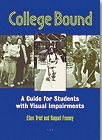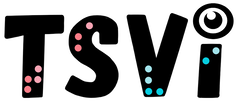- Home
-
Learn
- History of VI >
- Legislation & Laws >
- Vision Professionals >
-
VI Program Resources
>
- Program Printables
- Itinerant Teaching Tips
- Year at a Glance
- VI Program Handbook
- Caseload Analysis
- Organization & Time Management
- Professional Development
- Teacher Standards
- Professional Ethics
- Awards & Recognition
- APH Scholar Program
- Professional Organizations
- Certification Organizations
- Dealing with Challenges
- Professional Publications >
- Relatable Books for All Ages >
- Family Resources >
- Plan
- Basics
-
Teach
- Teaching Strategies >
-
Compensatory Skills Instruction
>
-
Social Skills
>
-
Self Determination
>
- Body Image & Acceptance
- Making Personal Goals
- My Vision Presentation
- My Self-Description
- Create a Personal Data Sheet
- Disclosure Decision
- Disability Statement
- Requesting Help
- Fighting Fears
- My Circle of Support
- Personal Responsibility
- Advocate for Safe Enviroments
- Having Picture Taken
- Coping with Change
- Aging Eyes
- Physical Characteristics
- Political Activism
- Laws Regarding Persons with Disabilities
-
Sensory Efficiency
>
-
Independent Living
>
- Orientation & Mobility Instruction >
- Recreation & Leisure >
-
Career & Vocation
>
-
Grow
- Complete Set Bonus >
-
Recorded Presentations
>
- Webinar: Tips for Being a "Physically Fit" TVI
- Webinar: The Art of Teaching the ECC
- Webinar: Virtual & F2F Strategies
- Webinar: Foundations of Teaching the ECC in the Age of Virtual Instruction
- Webinar: Itinerant Teaching Strategies
- Webinar: Using Themes to Teach the ECC
- Webinar: Conducting a FVLMA
- Webinar: Selecting the Right AT
- Webinar: Developing SMARTER Goals
- Webinar: Determining Service Intensity Using the VISSIT
- Webinar: Activities to Teach the ECC
- Webinar: Accessible Content for BLVI
- Webinar: Accommodations for VI
- Webinar: MIMO Strategies & Activities
- Webinar: SIDPID Strategies & Activities
- Webinar: Standard Course of Study Strategies & Activities
- Webinar: Job Tasks for Job, Career & Life
- Shop
- Jobs
Transition PlansBy: Carmen Willings
teachingvisuallyimpaired.com Not all students will have the same transition needs. The students interests, needs, and additional disabilities will guide the transition process. It is important to involve the student in planning the IEP as well as involved in planning for their future. Be respectful of the students interests and aspirations when assisting students and families in the transition from school to post-school activities. As the student advances through high school, and particularly in the student's senior year, the Teacher of Students with Visual Impairments (TVI) will gradually expect the student to do more for themselves. At this point the student with low vision should be using their optical devices without difficulty and problem solving when to use them. The student should be able to advocate for their own visual needs and become increasingly independent to the extent possible. This includes expecting the student to be increasingly responsible for their own needs and solve problems independently.
As the student advances through high school, and particularly in the student's senior year, the Teacher of Students with Visual Impairments (TVI) will gradually expect the student to do more for themselves. At this point the student with low vision should be using their optical devices without difficulty and problem solving when to use them. The student should be able to advocate for their own visual needs and become increasingly independent to the extent possible. This includes expecting the student to be increasingly responsible for their own needs and solve problems independently.
As part of the transition plan and as part of developing self determination, encourage the student to:
Assist the student in developing career awareness, completing career interest inventories, and information to assist students in evaluating their academic skills and career interests. The plan should be flexible enough to allow changes in the course of study and still meet graduation requirements. Transition services are a coordinated set of outcome-oriented activities for a student that promotes the movement (or transition) from school to post-school activities. The coordinated set of activities is based on a student’s needs, preferences, and abilities and may include: Instruction and related services; community experiences; development of employment; post-school adult living objectives; daily living skills instruction; and a functional vocational evaluation. The outcome-oriented process for the transition aged student means working at a job. The post-school activities presented by transition may include:
Individual Plan for Employment (IPE)
The student along with the educational team will define an employment goal and develop an IPE. The IPE is designed to match a student’s unique vocational strengths, abilities, and interests. The IPE and related individualized education program (IEP) should be aligned to ensure a unified plan of employment for the student. Transitioning to College For some transition age students, obtaining college degree is necessary step towards reaching the employment goal. In this situation, the team will guide student’s choice of where to attend college. How Can the School Help? Helping students prepare for competitive employment requires a systematic approach to career development. To prepare students for employment, the IEP team can:
Additional Transition Resources...
Trief, E., & Feeney, R. College bound: A guide for students with visual impairments. This resource book by AFB Press addresses everything a student needs to know to prepare them for the transition from high school to college. Topics include developing organization, note-taking, test-taking, study skills, managing living space, student-teacher relationships, social life, academic life, and extracurricular and leisure time activities.
Career ConnectCareer Connect is an employment information resource developed by the American Foundation for the Blind and currently operated by the American Printing House for the Blind. It is for job seekers who are blind or visually impaired. Provides employment information, career exploration tools, and extensive job seeking guidance for students and adults with vision loss and the professionals who work with them.
The National Technical Center on Blindness and Visual ImpairmentThe National Technical Center on Blindness and Visual Impairment focuses on providing employment outcomes for individuals who are blind or visually impaired. Whether you are interested in employing someone who is blind or visually impaired, provide services to individuals who are blind or visually impaired, or have a visual impairment yourself, this site will serve as your headquarters for resources and technical assistance.
College Success by Perkins School for the BlindCollege Success @ Perkins is a new program, designed for high school graduates who want to be fully prepared for college. The program goal is to equip students to get the most out of college by encouraging academic and personal growth, with a focus on preparing students to live on their own. The nine month program, which takes place on the campus of the Perkins School for the Blind in Watertown, MA, instructs students in how to navigate a college campus, how to join clubs and sports teams and how to cook meals in a campus apartment.
|
History of vi
Visual Impairments
Vi organizations & Agencies
VI book resources
VI Professionals
Professionalism
Instructional Planning
Professional Publications
Educational Programming
Individual Learning Differences
referrals
Medical vision exams
fvlma
additional evaluations
service planning
writing goals
compensatory skills
Guiding Principles Functional Skills Community Based Experiences Concepts to Teach Access to Instruction Organization & Study Skills Time Management Virtual Instruction Movies & Assemblies Lectures & Instruction Board Work (Chalk, White, etc.) Daily Schedule Morning Meeting Weather Check Dramatic Play Blocks Numbers & Counting Cranmer Abacus Instruction Algebra Geometry & Spatial Sense Measurement & Data Early Literacy Experiences Create Tactual Books Reading Instruction Reading Efficiency Science Adaptations Social Studies Adaptations Communication Modes Accessible Educational Materials Individual Schedules & Communication Cards Adjust Lighting Large Print Optical Devices for Near Optical Devices for Distance Optical Device Use Photocopying Font Legibility Increase Contrast Pictures & Worksheets Keyboarding Instruction Word Processing and Shortcuts Navigate Computer w/o a Mouse Braille Code Braille Instruction Braille Instruction Materials Writing Braille Summer Reading (braille) Signature & Handwriting Nemeth Braille Code Tactile Graphics Guidelines Creating Tactile Graphics Tactile Graphics Instruction Teacher Made Materials Labeling System assistive technology
Overview of Assistive Technology VI AT Resources Non-Optical Low Vision Devices Video Magnifiers Video Magnifier Instruction Screen Enlargement & Readers Low/Med. Tech Tactual Devices Notetaker Instruction Braillewriter Repair Tactile Graphics Technology Braille Technology Auditory Access Devices Accessing Audio Books iPads as Instructional Tools Making iOS Device Accessible iOS Accessibility Resources VoiceOver Apps for VI Note Taking apps Apps for Accessing Books Identification Apps Navigation & Location Apps Braille Apps Magnifier Apps Sound Making Apps Cause & Effect Apps Vision Skills Apps Apps for Early Learning Read to Me Story Apps Apps for Communication Android Apps for VI sensory efficiency
Sensory Input Encourage Use of Vision Sensory Area & Rooms Lightbox Use Sensory Activities for Students with Multiple Disabilities Sensory Tables Visual Efficiency Skills Visual Attend and Scan Activities Visual Tracking Activities Visual Discrimination Activities Visual Motor Activities Tactual Readiness Developing Skillful Hands Auditory Readiness Listening Skill Instruction independent living
orientation & Mobility
career education
recreation & Leisure
self determination
|
|
Teaching Students with Visual Impairments LLC
All Rights Reserved |
- Home
-
Learn
- History of VI >
- Legislation & Laws >
- Vision Professionals >
-
VI Program Resources
>
- Program Printables
- Itinerant Teaching Tips
- Year at a Glance
- VI Program Handbook
- Caseload Analysis
- Organization & Time Management
- Professional Development
- Teacher Standards
- Professional Ethics
- Awards & Recognition
- APH Scholar Program
- Professional Organizations
- Certification Organizations
- Dealing with Challenges
- Professional Publications >
- Relatable Books for All Ages >
- Family Resources >
- Plan
- Basics
-
Teach
- Teaching Strategies >
-
Compensatory Skills Instruction
>
-
Social Skills
>
-
Self Determination
>
- Body Image & Acceptance
- Making Personal Goals
- My Vision Presentation
- My Self-Description
- Create a Personal Data Sheet
- Disclosure Decision
- Disability Statement
- Requesting Help
- Fighting Fears
- My Circle of Support
- Personal Responsibility
- Advocate for Safe Enviroments
- Having Picture Taken
- Coping with Change
- Aging Eyes
- Physical Characteristics
- Political Activism
- Laws Regarding Persons with Disabilities
-
Sensory Efficiency
>
-
Independent Living
>
- Orientation & Mobility Instruction >
- Recreation & Leisure >
-
Career & Vocation
>
-
Grow
- Complete Set Bonus >
-
Recorded Presentations
>
- Webinar: Tips for Being a "Physically Fit" TVI
- Webinar: The Art of Teaching the ECC
- Webinar: Virtual & F2F Strategies
- Webinar: Foundations of Teaching the ECC in the Age of Virtual Instruction
- Webinar: Itinerant Teaching Strategies
- Webinar: Using Themes to Teach the ECC
- Webinar: Conducting a FVLMA
- Webinar: Selecting the Right AT
- Webinar: Developing SMARTER Goals
- Webinar: Determining Service Intensity Using the VISSIT
- Webinar: Activities to Teach the ECC
- Webinar: Accessible Content for BLVI
- Webinar: Accommodations for VI
- Webinar: MIMO Strategies & Activities
- Webinar: SIDPID Strategies & Activities
- Webinar: Standard Course of Study Strategies & Activities
- Webinar: Job Tasks for Job, Career & Life
- Shop
- Jobs

